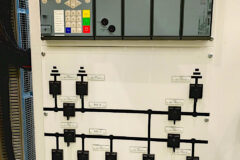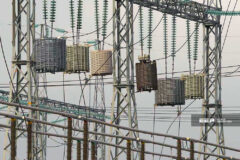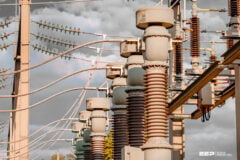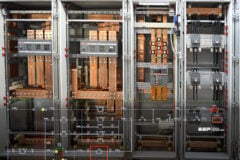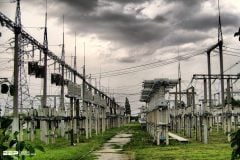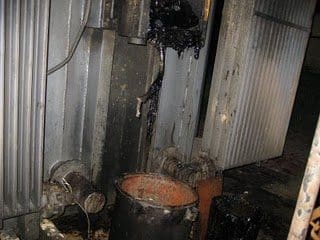
A number of electrical apparatus installed in substations are filled with oil that provides the necessary insulation characteristics and assures their required performance. Electrical faults in this power equipment can produce arcing and excessive temperatures that may vaporize insulating oil, creating excessive pressure that may rupture the electrical equipment tanks. In addition, operator errors, sabotage, or faulty equipment may also be responsible for oil releases.
The initial cause of an oil release or fire in electrical apparatus may not always be avoidable, but the extent of damage and the consequences for such an incident can be minimized or prevented by adequate planning in prevention and control. Described below are various sources of oil spills within substations.
Spills from any of these devices are possible. The user must evaluate the quantity of oil present, the potential impact of a spill, and the need for oil containment associated with each oil-filled device.
Large Oil-Filled Equipment
Power transformers, oil-filled reactors, large regulators, and circuit breakers are the greatest potential source of major oil spills in substations, since they typically contain the largest quantity of oil. Power transformers, reactors, and regulators may contain anywhere from a few hundred to 100,000 l or more of oil (500 to approximately 30,000 gal), with 7500–38,000 l (approximately 2000–10,000 gal) being typical.
Substations usually contain one to four power transformers, but may have more.
The higher voltage oil circuit breakers may have three independent tanks, each containing 400–15,000 l (approximately 100–4000 gal) of oil, depending on their rating.
Cables
Substation pumping facilities and cable terminations (potheads) that maintain oil pressure in pipe-type cable installations are another source of oil spills. Depending on its length and rating, a pipe-type cable system may contain anywhere from 5000 l (approximately 1500 gal) up to 38,000 l (approximately 10,000 gal) or more of oil.
Mobile Equipment
Although mobile equipment and emergency facilities may be used infrequently, consideration should be given to the quantity of oil contained and associated risk of oil spill. Mobile equipment may contain up to 30,000 l (approximately 7500 gal) of oil.
Oil-Handling Equipment
Oil filling of transformers, circuit breakers, cables, etc. occurs when the equipment is initially installed. In addition, periodic reprocessing or replacement of the oil may be necessary to ensure that proper insulation qualities are maintained. Oil pumps, temporary storage facilities, hoses, etc. are brought in to accomplish this task.
Although oil processing and handling activities are less common, spills from these devices can still occur.
Oil Storage Tanks
Some consideration must be given to the presence of bulk oil storage tanks (either above-ground or below-ground) in substations as these oil tanks could be responsible for an oil spill of significant magnitude. Also, the resulting applicability of the 40CFR, Part 112 rules for these storage tanks could require increased secondary oil containment for the entire substation facility.
The user may want to reconsider storage of bulk oil at substation sites.
Other Sources
Station service, voltage, and current transformers, as well as smaller voltage regulators, oil circuit reclosers, capacitor banks, and other pieces of electrical equipment typically found in substations, contain small amounts of insulating oil, usually less than the 2500 l (approximately 660 gal) minimum for a single container.
SOURCE: Anne-Marie Sahazizian, Tibor Kertesz – Oil Containment

